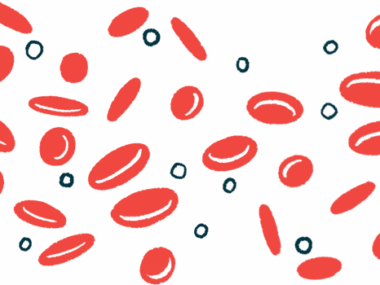Therapy targeting CAD self-reactive antibodies shows promise in lab
Efficacy seen with Hummingbird Bio's HMBD-011 in CAD cellular model
Written by |

An experimental treatment called HMBD-011, designed to target self-reactive antibodies and the immune B-cells that produce them, showed efficacy in a cellular model of cold agglutinin disease (CAD), according to new preclinical findings presented at a scientific conference.
“HMBD-011 is a potentially first-in-class … antibody developed for treatment for CAD and lupus,” Hummingbird Bioscience, the therapy’s developer, said in a company press release.
Hummingbird Bio expects to start clinical testing of HMBD-011 in late 2024 or mid-2025.
“With its differentiated mechanism of action, HMBD-011 has the potential to address underlying disease [mechanisms] in lupus … and cold agglutinin disease,” said Jerome Boyd-Kirkup, PhD, Hummingbird Bio’s chief scientific officer.
The preclinical findings were presented in a poster at the IMMUNOLOGY2023 conference, the annual meeting of the American Association of Immunologists, held May 11-15 in Washington, D.C. The poster was titled “Targeting pathogenic auto-reactive VH4-34 B cells with a rationally developed and highly specific anti-VH4-34 antibody offers a new therapeutic approach for VH4-34 autoimmune disorders.”
Novel treatment for CAD targets region called VH4-34
B-cells are a type of immune cell that is responsible for making antibodies, immune proteins that are able to stick to a specific target with extremely high specificity. Normally, B-cells make antibodies that bind to infectious viruses and bacteria, triggering other parts of the immune system to destroy the threat.
In autoimmune diseases such as CAD and lupus, B-cells wrongly make antibodies that target the body’s own healthy tissues, known as self-reactive antibodies or autoantibodies. In people with CAD, autoantibodies called cold agglutinins stick to red blood cells and cause them to clump together, or agglutinate, at low temperatures.
Any given B-cell will only make one specific type of antibody against a single molecule target. When a B-cell is first developing, it goes through a complex series of molecular steps to, in effect, put together its particular antibody.
Once the cell matures, it uses a version of the antibody on its surface as a receptor protein. When the receptor engages its target, it triggers the cell to activate and release antibodies out into the bloodstream.
The mechanisms by which B-cells produce antibodies, and how this goes wrong to lead to the generation of autoantibodies, are extremely complex and only partially understood.
But it’s known that, sometimes, B-cells will put together antibodies carrying a particular region called VH4-34, whose structure makes it prone to reacting with the body’s own tissue. VH4-34-containing antibodies bind to several healthy cellular molecules, including some that are present in red blood cells.
In healthy people, less than 1% of B-cells produce VH4-34-containing receptors and antibodies. In people with autoimmune diseases, meanwhile, these cells are wrongly activated and expanded.
Higher levels of these VH4-34-containing B-cells and antibodies have “been implicated in systemic lupus erythematosus (50%) and virtually all cases of cold agglutinin disease,” the researchers wrote. The team noted that more than 85% of CAD patients are positive for these antibodies.
“To date there have been no therapies against VH4-34 due to challenges of specifically targeting VH4-34 while avoiding other [antibody] regions,” the researchers wrote.
HMBD-011 tested in cellular, mouse models in lab
Created with Hummingbird Bio’s Rational Antibody Discovery approach, HMBD-011 is an antibody-based treatment, for CAD and lupus, that selectively and strongly binds to the VH4-34 region in both antibodies and B-cells.
“HMBD-011 targets the small conserved conformational hydrophobic [water-repelling] patch of VH4-34, which is challenging to target with traditional antibody discovery approaches,” Boyd-Kirkup said.
As such, the therapy is expected to promote the elimination of these autoantibodies and also trigger the body’s own normal immune processes to destroy the disease-driving B-cells that make these autoantibodies. Ultimately, this may help to prevent further autoimmune attacks and associated damage in CAD and other autoimmune diseases.
The newly presented data concerned a battery of preclinical experiments — testing done in the laboratory — showing that HMBD-011 works as designed. Specifically, it was shown to selectively bind to the VH4-34 region and mediate the clearance of VH4-34-positive B-cells through antibody-dependent immune mechanisms.
In mice, the therapy was shown to clear VH4-34-positive antibodies and normalize the number of VH4-34-positive B-cells in circulation within about 24 hours.
“HMBD-011 was able to quickly and durably remove these [VH4-34-positive] antibodies, and the [VH4-34-positive] B cells that produce them, from circulation in mice, suggesting that the benefits of HMBD-011 should persist over time,” Boyd-Kirkup said in an emailed statement to Cold Agglutinin News.
Our studies have shown that HMBD-011 can prevent the binding of self-reactive [VH4-34-positive] antibodies to red blood cells, a critical trigger for CAD … [being] therefore very effective in stopping cold agglutination in our pre-clinical models.
Importantly, tests in a cellular model of CAD showed that the treatment could stop autoantibody-mediated red blood cell clumping at low temperatures.
“Our studies have shown that HMBD-011 can prevent the binding of self-reactive [VH4-34-positive] antibodies to red blood cells, a critical trigger for CAD … [being] therefore very effective in stopping cold agglutination in our pre-clinical models,” Boyd-Kirkup said.
These findings highlight that “HMBD-011 represents a potentially important new therapy for patients with cold agglutinin disease,” Boyd-Kirkup said.
For CAD, “HMBD-011 should be a safe treatment as it preserves normal immune functions by selectively depleting only harmful antibodies and leaving other healthy B cells and their antibodies intact,” he said.







